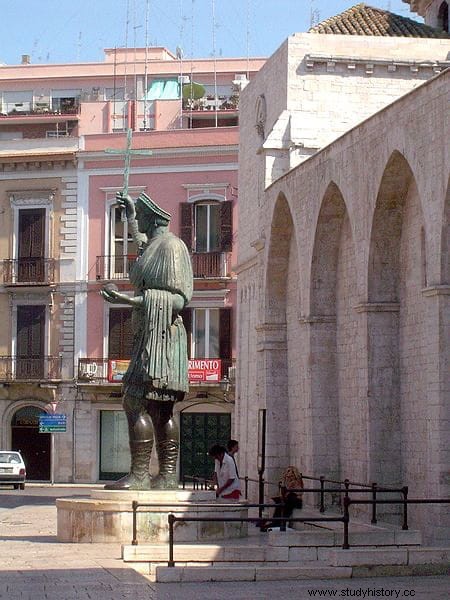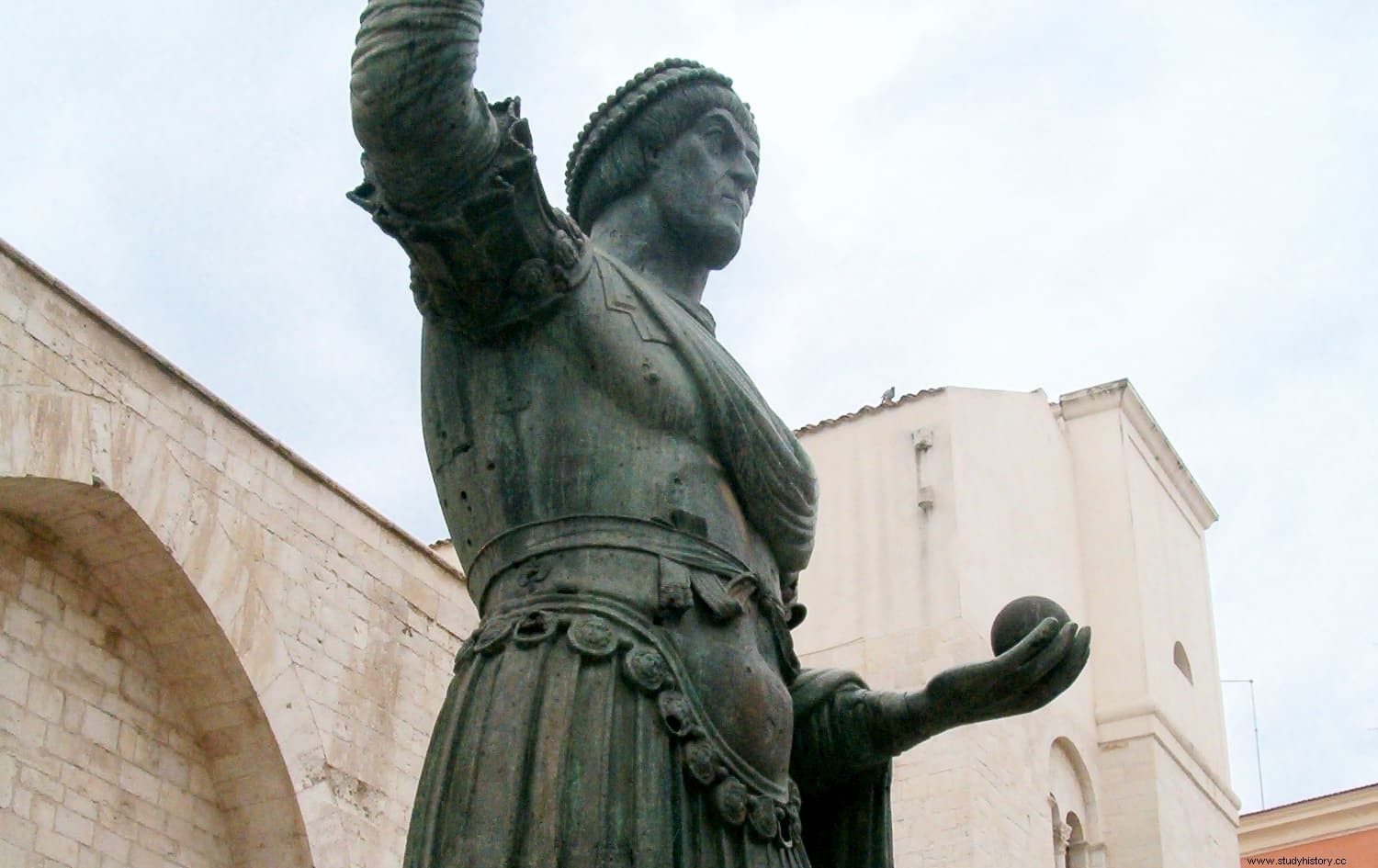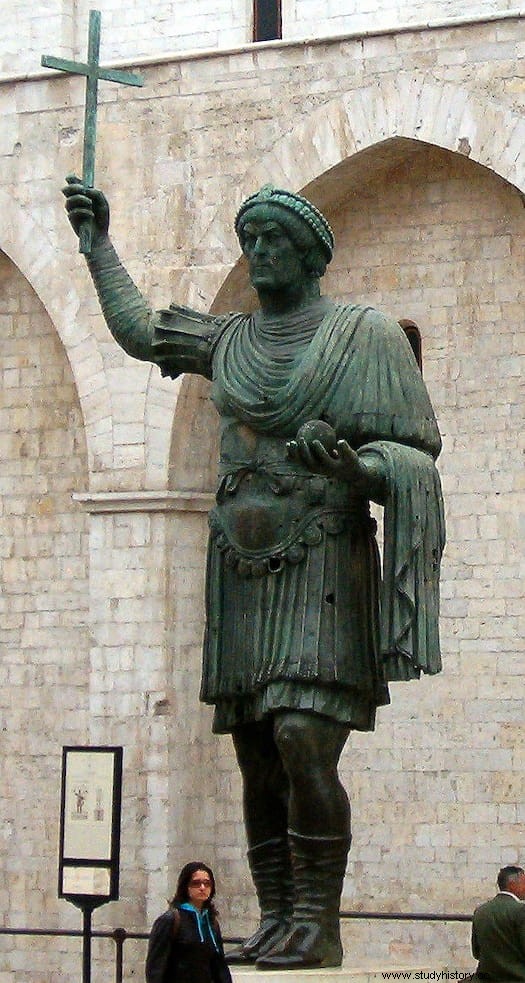In the Italian city of Barletta, located on the shores of the Adriatic Sea in the Apulia region, and in front of the Basilica of the Holy Sepulcher there is a colossal statue of more than 5 meters high that represents a Roman emperor. It is not known how he came to the city or where he came from, not even which emperor is the one portrayed in it. But, of course, there are legends and various opinions about it.
It represents a bearded emperor, about 50 years old, with his head slightly tilted to the left, his face asymmetrical (wider and rounder on the right), raising his right hand in which he originally could have carried a scepter, a spear or a labarum but to which a cross was placed later. In his left hand, with his arm bent at the elbow and hidden by his cloak, he holds an orb.

He wears two tunics, the lower one being visible at the right shoulder and left elbow, and a leather cuirass fitted with a belt on which gorgons are depicted and tied with a Hercules knot (reef knot).
The imperial diadem is about 15 centimeters wide, with the edges full of pear-shaped pearls, about 50 at the bottom and 48 at the top. In the center it has a quadrangular hole for a precious stone, and another 17 gem cavities on each side in the middle.
Legend has it that the statue appeared in the sand on a beach after a Venetian ship, returning from sacking Constantinople in 1204, was shipwrecked. But tests found no trace that it was ever in the sea. It is also known that in 1231 a colossal statue was found in Ravenna, which Emperor Frederick II was able to send to his lands in Apulia. But the first mentions of the Colossus of Barletta, as it is known today, date back to 1309, when Charles II of Anjou authorized the Dominican monks to use the statue to build bells.
The colossus was rebuilt in 1491 by the sculptor Fabio Alfano, restoring the missing parts, which were mainly the legs, fragments of the forearms and the head above the diadem.

Studies at the University of Palermo dated the colossus to the first half of the 5th century AD. It is believed that the entire statue was originally gilded, except for the folds of the clothing, the rim of the diadem and the tunic, which turned out to be covered in bronze. It is known that the whites of the eyes were silver because traces of silver sulfide have been found under the eyelids.
Tradition affirms that the emperor represented in it is Heraclius, who ruled the Eastern Empire between 610 and 641, and in fact the Italians call it Eraclius . Even the name of Polyphobus is given as its sculptor. This is what some researchers like F.P. thought at the beginning of the 20th century. Johnson, dating the statue to around AD 625. and concludes that there is no reason not to believe in the tradition.

But the truth is that it is not known with certainty who he represents, considering as possibilities Honorius, Valentinian I, Theodosius II, Martian, or Leo I the Thracian. All of them ruled before Heraclius, between the 4th and 5th centuries AD
The choice of Valentinian I is based on the similarity of the head with that depicted on the coins of that emperor. As for Theodosius II, a resemblance has been found with a marble head dated to 440 AD. and, in addition, a jewel belonging to his mother has been identified in the diadem of the colossus.
In the case of Leo I the Thracian, who was emperor of the East between 457 and 474 AD, it could be the statue that crowned his honorary column, erected between those years in Constantinople, and fragments of which have been found in excavations near the Palace. Topkapi. So thought the archaeologist Urs Peschlow, who published a reconstruction of the column and stated that the size of the colossus matched its dimensions. In addition, the statue follows the same model as that of Constantine, who crowned his own column in the city, holding a spear in his right hand and an orb in his left.
